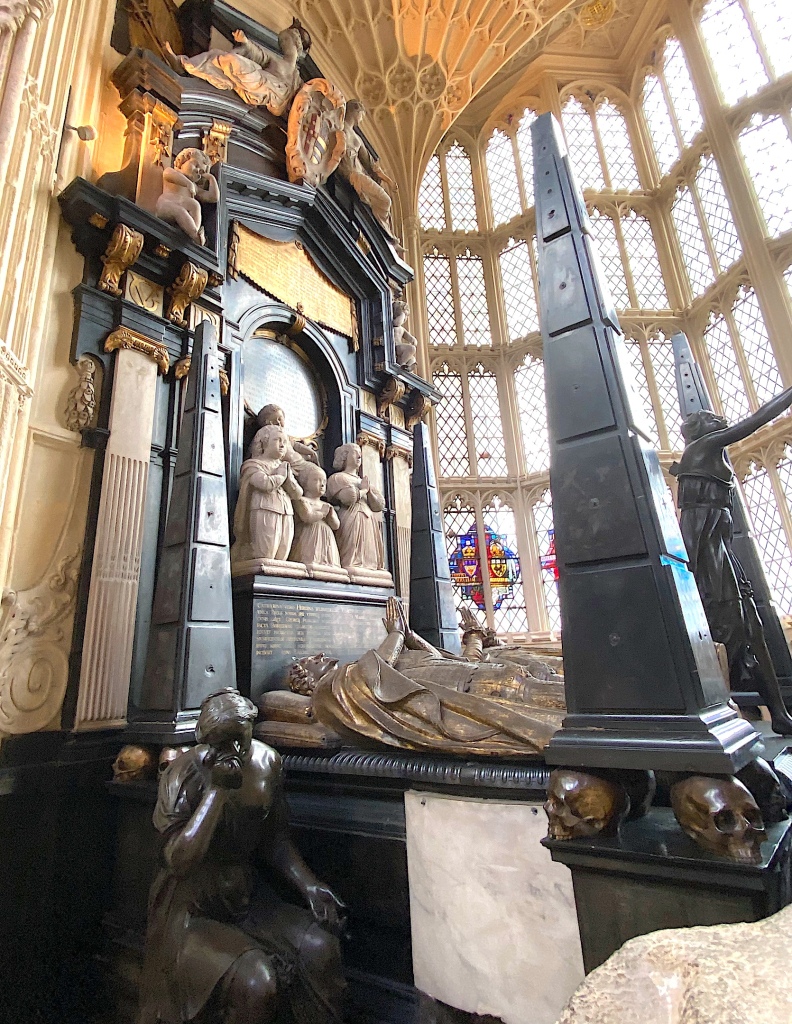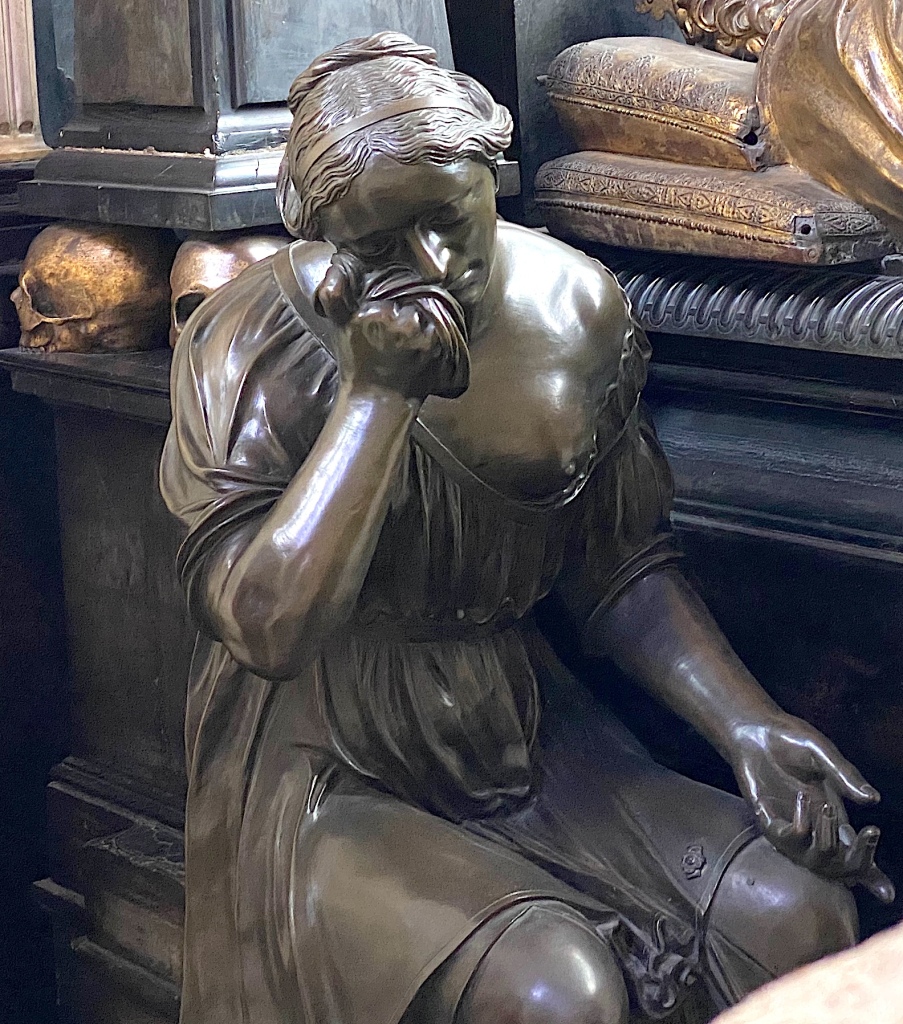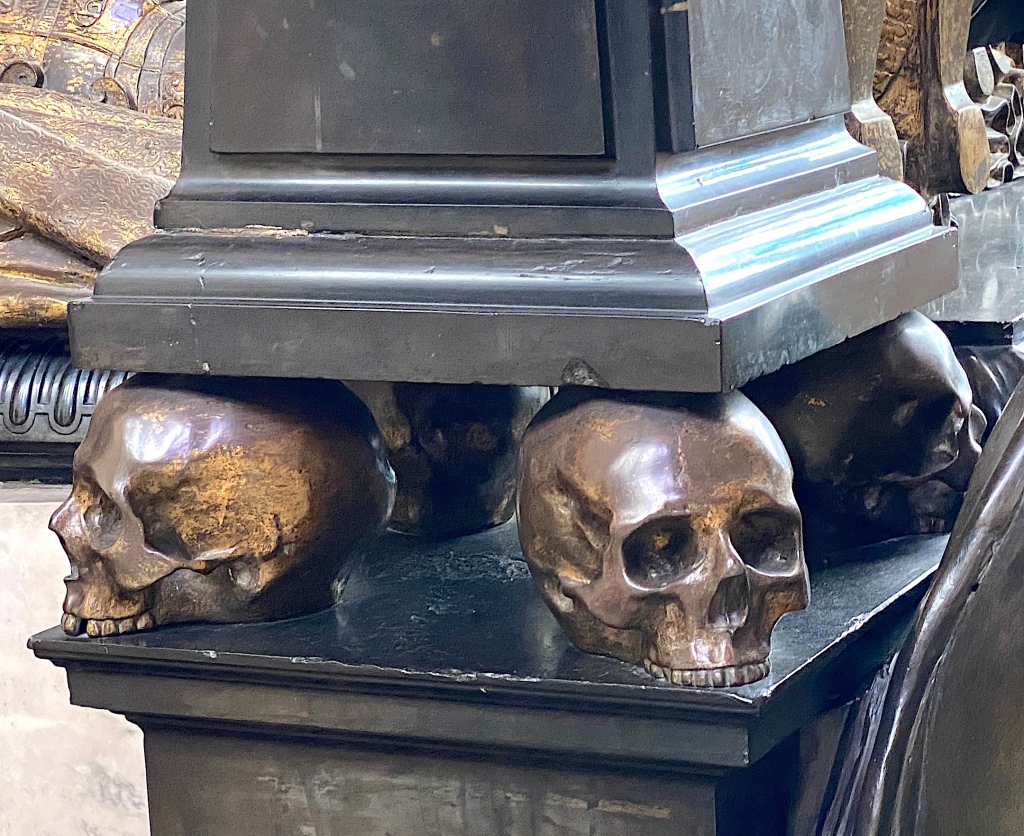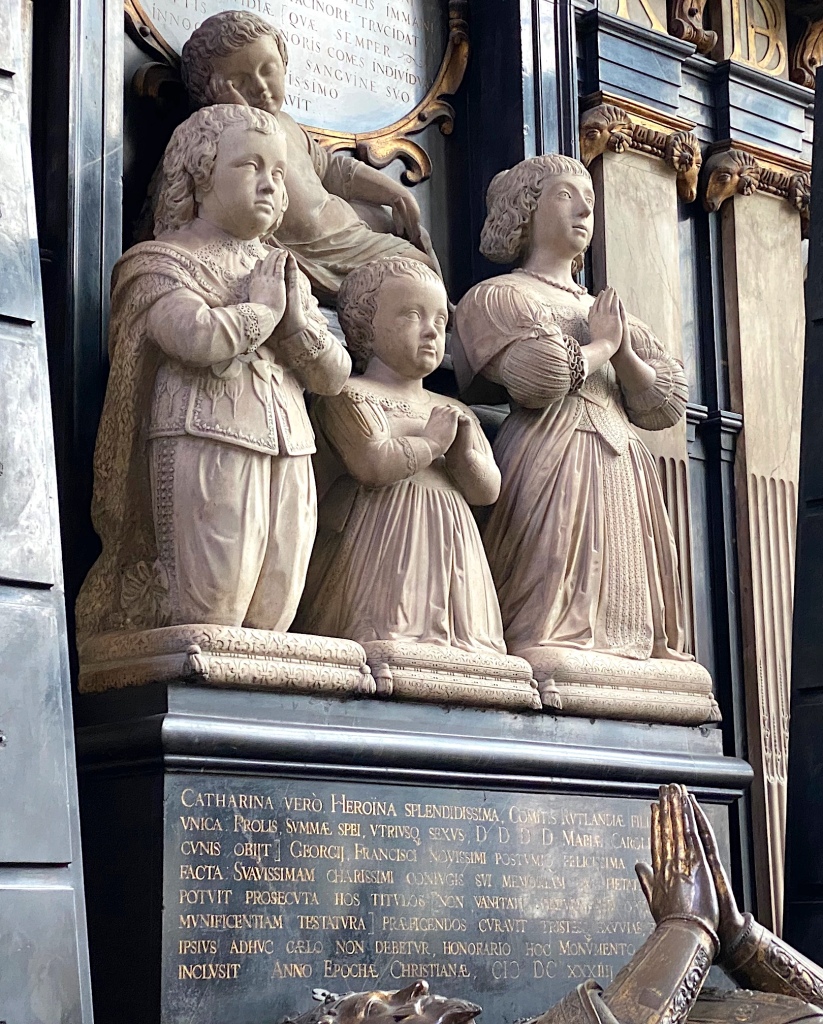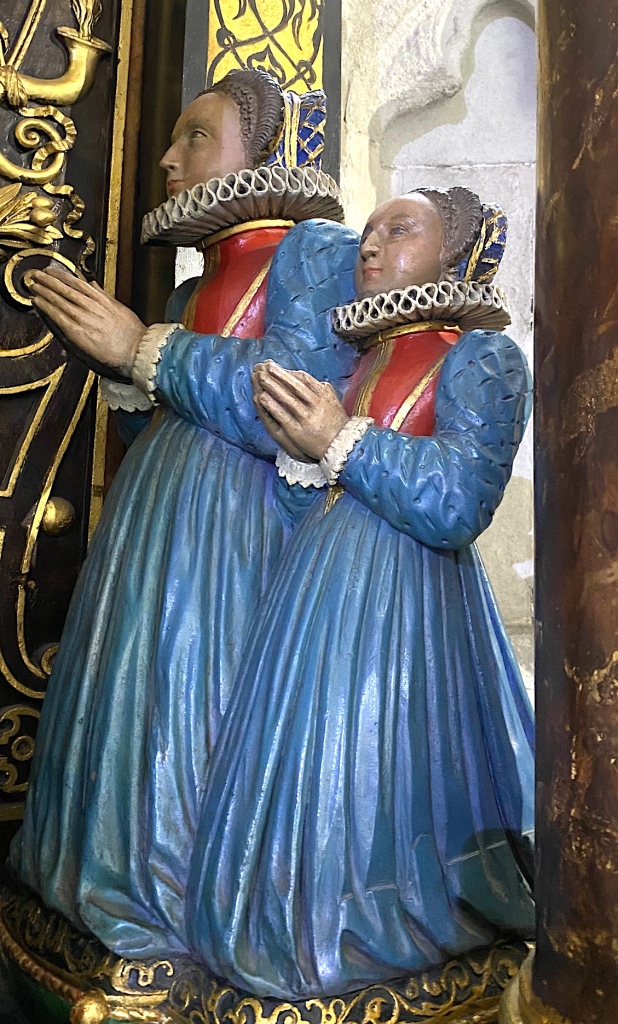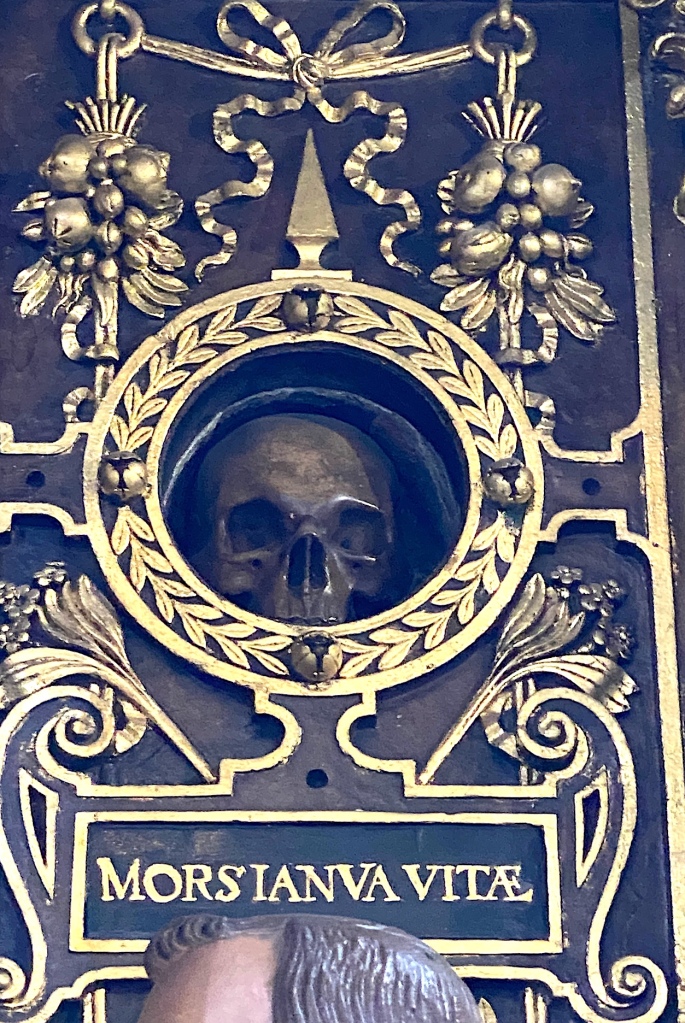Many thanks to the amazing Grace Barrett of Tours by Grace for leading us through Westminster Abbey!
When last I posted, I was still at Westminster Abbey and sharing the graves royals that got the “not so royal” treatment. The last monument I shared was for a non-royal named Ludovic Stewart, who isn’t known for much at all.
Stewart’s monument was created by Hubert Le Sueur (1580-1658), a French sculptor who trained with Renaissance artist Jean de Boulogne (known better as Giambologna) in Florence, Italy. Hubert moved to England and spent most of his career there, providing monuments, portraits, and replicas of classical antiquities for the court of Charles I.
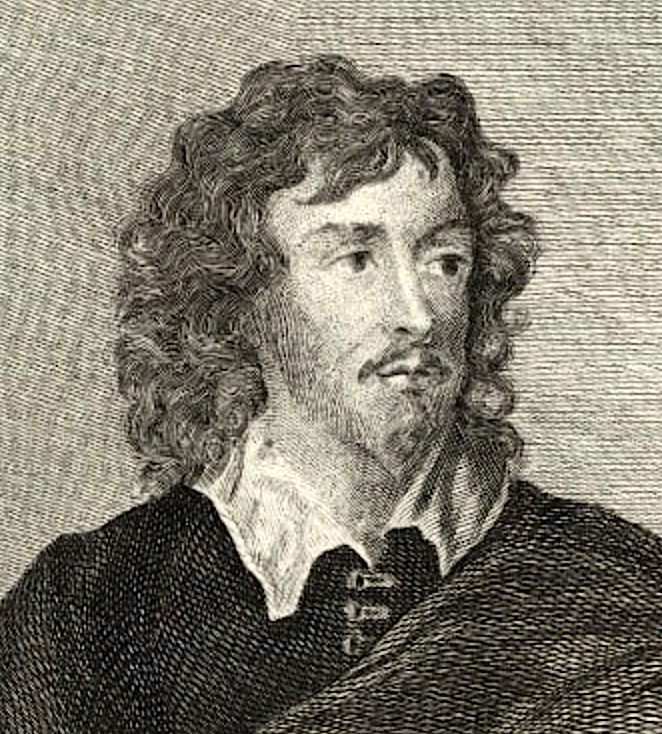
If you find yourself in London’s Trafalgar Square, you’ll see the statue he did of Charles I in 1633, when it was originally commissioned by Charles I’s Lord Treasurer Sir Richard Weston for his house Mortlake Park, Roehampton. The statue was later erected in Trafalgar Square (on the site of Eleanor Cross) in 1674.
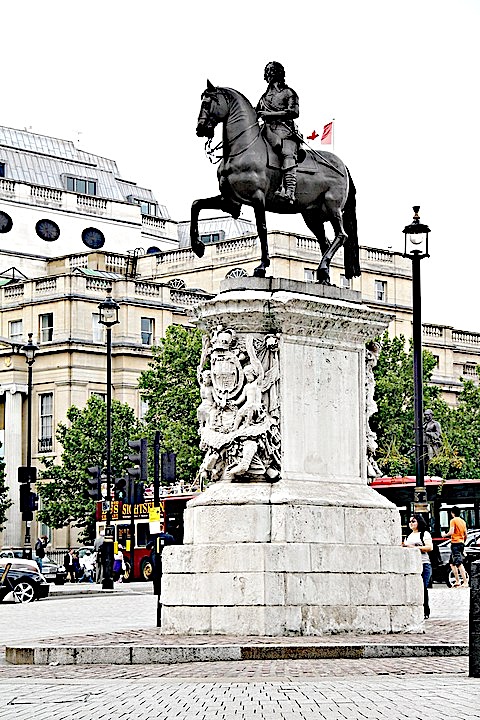
I was interested in Le Sueur because he did another memorial at Westminster Abbey that became one of my favorites. The monument to George and Katherine Villiers is stunning. It features some similar motifs as the one he did for Ludovic Stewart, such as weeping ladies and toothy skulls.
George Villiers, Duke of Buckingham
George Villiers, the first Duke of Buckingham, born in 1592, was a favorite of James I and Charles I. He rose to power quickly, but the results of his erratic counsels made him unpopular with the people, if not the king.

On the eve of leading an expedition for the relief of La Rochelle in France, he was assassinated on Aug. 23, 1628 at Portsmouth by disgruntled soldier John Felton. Villiers’ mother, Mary, had such a strong premonition about his death that she was reportedly calm when she was told about it.
Charles I ordered the Duke’s burial in the chapel (previously reserved for those only of royal descent) but with little pomp for fear of public backlash. The Duke was buried at night on Sept. 18, 1628.
The Duke’s wife, Duchess Katherine (Manners), erected the large monument of black/white marble and bronze in 1634. Her effigy is shown beside him but she was actually buried at Waterford in Ireland (she died Nov. 3, 1649). Her second husband was Randal MacDonnell, the first Marquess of Antrim.
The gilded bronze effigy of the Duke shows him in monogrammed plate armor while the Duchess is shown in an embroidered dress, ruff, and mantle, both wearing coronets. At their feet is a figure of Fame although it has lost its trumpet.
At each corner is a black marble obelisk supported on four skulls with bronze mourning figures of Pallas, Benevolence, Neptune, and Mars.
I think, however, one of the most poignant motifs in the monument is that of the Duke and Duchess’ children.
Small statues, by sculptor Isaac Besnier, represent four of their children including Lord Francis Villiers (1629-1648), a posthumous child killed fighting the Parliamentary forces and is buried in the Buckingham vault. The other children buried in the Abbey are Charles (1625-1627), George (second Duke of Buckingham), and Mary, Duchess of Richmond.
Sir George Villiers and Mary, Countess of Buckingham
If you want a glimpse of the Duke’s parents, you can find them (or rather one of them) across the way in the Chapel of St. Nicholas in the Lady Chapel.
A sheep farmer, Sir George was the son of William Villiers and his wife Colett (Clarke). Serving as a sheriff of Leicestershire, he was knighted in 1593 and served as a Member of Parliament.
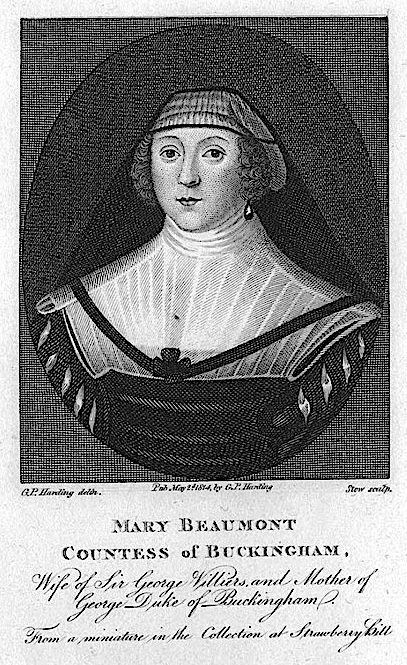
He had four daughters and two sons with his first wife Audrey. He married next his cousin Mary, daughter of Anthony Beaumont, and had four children that included George, the aforementioned first Duke of Buckingham. Mary was created Countess of Buckingham in her own right in 1618, and married secondly Sir William Raynor and last, Sir Thomas Compton.
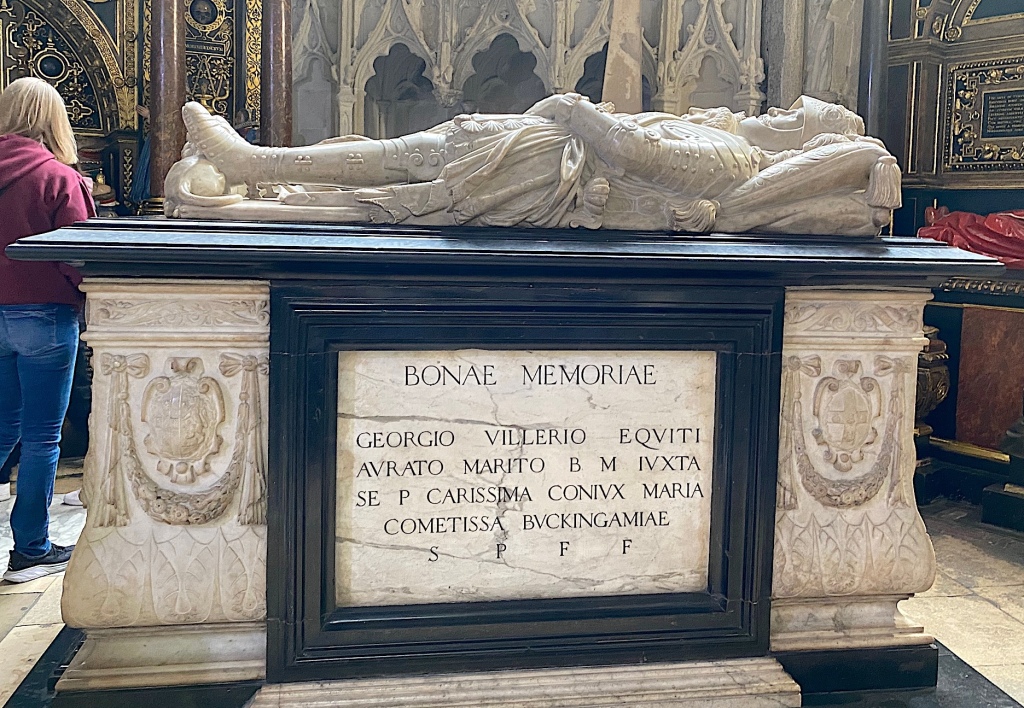
Sir George died on Jan. 4, 1606 at age 61. Although he has an effigy, he’s actually buried at St. Denys, Goadby, in Leicestershire near his home.
The Westminster Abbey web page describes the monument like this.
On the altar chest, he is represented partly in plate armor with a plumed helmet, wearing trunk breeches and a sash on which are depicted shells. His feet rest on a lion. His wife has her head on embroidered cushions with cherub head tassels and wears an ermine lined robe, coronet and jewelled necklace with a pendant cross. She has a lion at her feet also. At each end of the monument chest are heraldic achievements with initials SGV and CMB at the corners. It was made in 1631 at the request of the Countess by sculptor Nicholas Stone who was paid 560 pounds for it. The carvers of the arms were Anthony Goor and Harry Akers.
I have a little bit of information on Nicholas Stone at the end of this post.
Mary died on April 19, 1632 and was buried a few days later in the chapel. Although she married twice after Sir George’s death, it was he that she wanted to be buried with after she passed away.
Mildred and Anne Cecil
A few weeks ago, I showed photos of Mary, Queen of Scots’ large monument, carved by Cornelius Cure and completed by his son, William. There’s another grand monument at the Abbey that Cornelius did that was for Mildred Cooke Cecil (1526-1589), Lady Burghley, and her daughter, Anne Cecil de Vere, Countess of Oxford.
The monument is 24 feet high, in St Nicholas’ Chapel. Both Mildred and Anne wear long fur-lined red cloaks, and there is a unicorn at Anne’s feet.
So who were this mother/daughter pair?
Born in 1526, Mildred was one of the daughters of Sir Anthony Cooke (or Coke) of Gidea Hall, Essex, tutor to Edward VI (you might recall his tiny square I featured last week!). Educated by her father, Mildred was known as a scholar and philanthropist. She was William Cecil’s, Lord Burghley’s, second wife. Her effigy is the one in front.
Lord Burghley was Secretary of State and High Steward of Westminster. He was a trusted adviser of Elizabeth I.
Mildred’s children were Anne (1556-1588), Robert (1563-1612) and Elizabeth (1564-1583). Anne is the effigy behind Mildred’s. She was married to Edward de Vere, 17th Earl of Oxford in 1571 at Whitehall Palace, in the presence of Queen Elizabeth I. The marriage was reportedly unhappy one, producing three daughters; Elizabeth, Bridget and Susan, who were later buried with Anne and Mildred. Anne’s husband, Edward, was buried at St. Augustine, Hackney with his second wife.

The kneeling figure of Lord Burghley is up at the top center of the monument, which you can see in the picture just above the one of Bridget and Susan. He’s not buried here, however, and is at St. Martin’s Churchyard in Stamford, England.
There’s also the kneeling figure of Sir Robert Cecil, who was Mildred’s son and Anne’s brother. Sir Robert is credited with being the person who discovered the Gunpowder Plot of 1605, an act of treason against King James I. He’s not interred at Westminster Abbey but is at St. Etheldreda Cathedral in Hertfordshire, England.
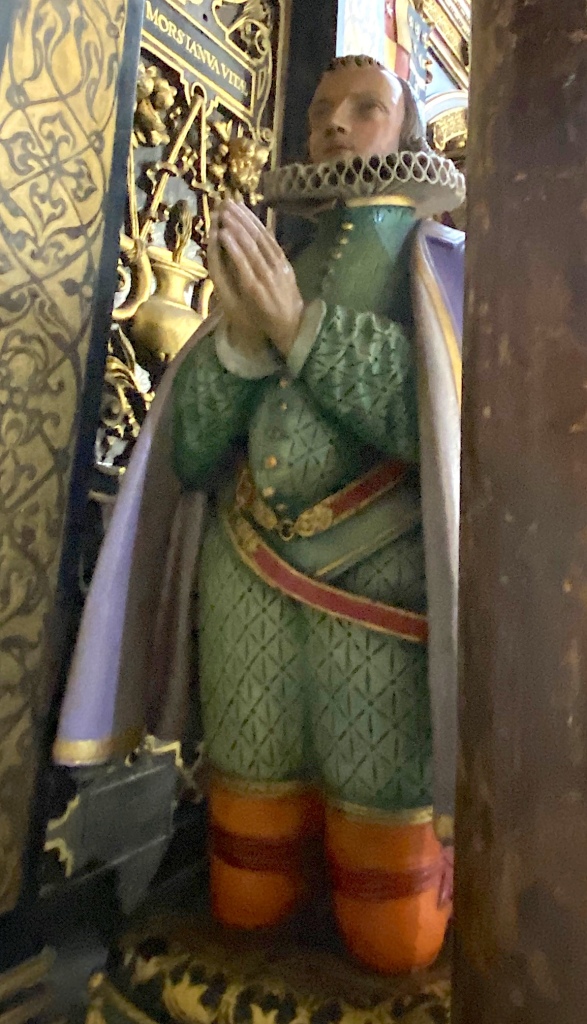
You’ll find a number of long epitaphs all over the monument, said to be written by Lord Burghley himself. You can read them all translated into English here.
Then there are the pair of skulls on either side of the monument, with the inscriptions “Death is Life” (on the left) and “Death to me is gain” (on the right).
In the 19th century, the monument was restored by Lord Cranborne, and cleaned and re-painted in the late 1950s.
Cornelius Cure’s father was William Cure I, a Dutchman, but Cornelius was born in England. He lived and worked in Southwark. William Cecil, Lord Burghley, recommended that he be appointed to replace Edward Young as royal master mason to the courtier William Killigrew, highlighting Cure’s skill, honesty, and knowledge of work in foreign places. Cure was appointed master mason of the Tower of London and the Queen’s other residences in June 1596. Cornelius Cure died in 1607.
So it makes perfect sense that Cornelius Cure would be the one to carve the Cecil family’s grand monument.
William succeeded his father to the post of master mason to James I. He worked under Inigo Jones at the Banqueting House, Whitehall, and continued to hold the office until his death in 1632. William was succeeded by Nicholas Stone, who created the monument to Sir George Villiers and his wife, Mary, that I showed you earlier.
Next time, I’ll be on top of the world with Sir Issac Newton.

